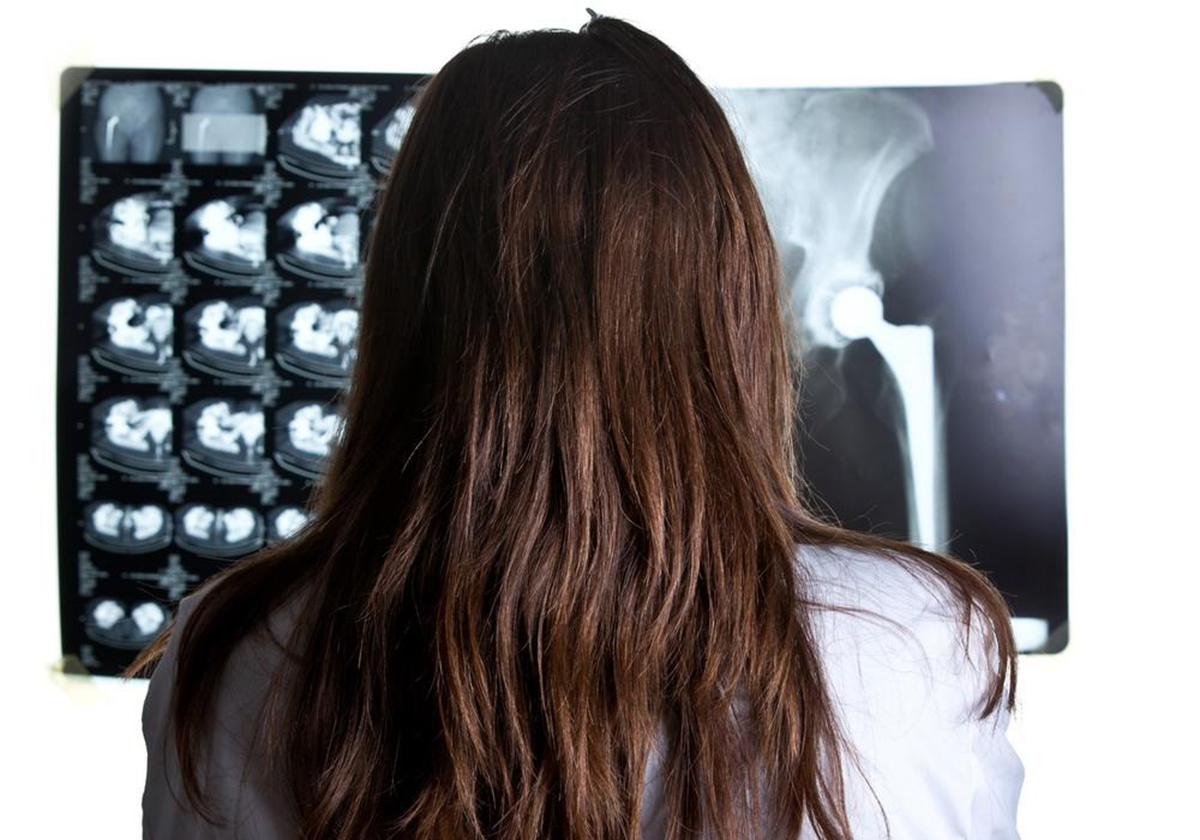Radiologists are specialists who report on the findings of imaging techniques such as X-rays, CT scans, ultrasounds and MRIs. These investigations are done to aid a physician in diagnosing and managing a specific disease or illness. Radiologists can also perform certain minimally invasive medical procedures under the guidance of imaging investigations, and the discipline that is involved here is called interventional radiology.

The medical images are obtained by radiographers, who are healthcare professionals who perform procedures such as taking X-rays and working the CT scanner and MRI machine. The radiologist will then look at the images taken by the radiographers, interpret these images and compiles a report of their findings, opinion or diagnosis. This report is then sent to the referring doctor who requested the imaging investigation via hard copy being delivered to them, telephonically or can be accessed on the picture archiving and communication system (PACS) where the images are stored digitally and can be accessed by the patient's treating physicians.
Training
A doctor who wants to specialise in radiology needs to complete a 5 year residency programme at an institution that offers radiology as a postgraduate specialty, and that have consultants available to teach and mentor these clinical assistants. In order to be allowed to specialise, a medical student needs to complete their undergraduate medical degree, that takes 5-6 years to complete, to qualify as a medical doctor. Doctors then need to complete a 1-2 year internship phase where they are exposed to different medical and surgical specialties.
Sub-specialties in radiology are available for specialists to sub-specialise in by completing a 1-2 year fellowship training programme and they include the following:
- Interventional radiology
- Interventional neuroradiology
- Abdominal imaging
- Thoracic imaging
- Magnetic resonance imaging (MRI)
- Cross-sectional studies/ultrasound
- Musculoskeletal imaging
- Neuroradiology
- Paediatric radiology
- Nuclear medicine
- Emergency radiology
- Breast and women's
Diagnostic imaging techniques in radiology
Radiographs (X-rays)
These images are produced by shooting X-rays through a patient. The X-rays are beamed through the body onto a detector, and an image is formed based on which rays pass through versus those that are scattered or absorbed in the patient.
Radiography is usually the first test of choice in diagnostic imaging and many diseases can be diagnosed with X-rays such as pneumonia, arthritis, fractures, bowel obstruction and congenital skeletal abnormalities.
Ultrasound
This investigative method uses high-frequency sound waves to examine soft tissues and organs of the body in real time. The advantage of ultrasound is that it doesn't use ionizing radiation to produce an image which makes it a very safe procedure to perform. A disadvantage of ultrasound use is that the quality of the images seen is operator dependent, and is also affected by the size of the patient. Nowadays, ultrasound machines can produce 3D-reconstructions, especially of an unborn fetus.
Computerized tomography (CT) scan
In CT imaging, X-rays are used together with computing algorithms to scan the body. Here, an X-ray tube is situated opposite to X-ray detectors in a circular apparatus that rotates around a patient. A notable point is that CT exposes the patient to more ionizing radiation than a normal X-ray procedure does.
READ Passion, Affluence, Respect: The Real Incentives behind Choosing a Medical Specialty
CT scans have become the investigation of choice in diagnosing urgent and emergent conditions such as diverticulitis, appendicitis, pulmonary embolism, cerebral hemorrhage and kidney stones causing obstruction in the ureters.
Magnetic resonance imaging (MRI)
MRI scans give the best soft tissue imaging of all the modalities used in radiology, and has become an important tool in neuroradiology and musculoskeletal radiology.
The Daily Schedule Of A Radiologist
Radiologists don't directly consult with patients but they do come into contact with them when explaining how an imaging technique is performed, and when giving patients instructions such as when to breathe and how to lie during a procedure. Interventional radiologists who perform minimally invasive procedures will consult with a patient and will follow up with them accordingly.

Radiologists are expected to provide on call services for the hospital they work at during after hours and weekends. The radiologist will perform duties such as reporting on images that at taken during a certain part of the day for physicians to follow up on, they will give an opinion on an image that is queried by medical staff such as casualty doctors and perform, interpret and give feedback on emergency scans such as in patients with haemorrhagic strokes, multiple fractures and acute abdomens due to ruptured abdominal aortic aneurysms, etc.
Monday
This is usually an administrative day where tasks such as sorting out the rotation list of radiologists (to determine who works in which department and who is on call), confirming and attending meetings with hospital staff, management and colleagues and any technical issues regarding radiological equipment are dealt with.
Tuesday to Friday
Radiologists will divide themselves up in order to provide services relating to the diagnostic imaging techniques which can be performed. This would mean that the radiologists have to be available to perform and interpret images produced by radiographs (X-rays), ultrasounds, CT scans, MRI scans, nuclear medicine, fluoroscopy and angiography and interventional procedures.
The doctor who is on call for the department will have to be able to perform any radiological procedure depending on the needs of the patient. It's therefore important that even practicing radiologists still get to rotate within radiology to receive constant exposure to performing these techniques. The rotation of these specialists will depend on the schedule that has been agreed on and this may include monthly and 3-monthly rotations or whatever everyone is comfortable with.
READ The Most Recommended Medical Apps for Medical Doctors
Additionally, on a Thursday, radiologists who are involved with the academic programme of the medical school will be involved in training undergraduate students and postgraduate registrars. Other duties that may be performed on this day includes further research for the doctor's educational needs or performing a study for a symposium presentation.
Fridays will be used to finalise any other administrative issues that need to be cleared up or resolved. The work week will conclude once all elective patients have been examined and the reports have been typed out. Doctors who are on call for the weekend will be present at the radiology department for a set time period, and they will then be on call from home for further consultations and opinions.
- en.wikipedia.org/wiki/Radiology
- Photo courtesy of Shutterstock.com
- Photo courtesy of Shutterstock.com


Your thoughts on this